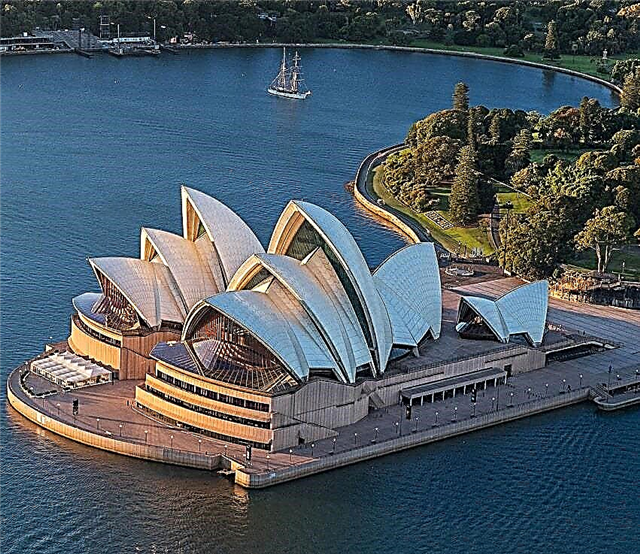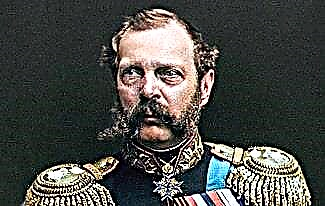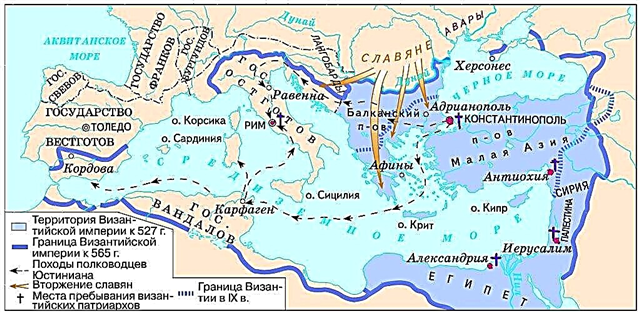Hundreds of books and thousands of articles have been written about the history of London. But for the most part, these works consider the political, less often - the economic or architectural history of the British capital. We can easily find out under which king this or that palace was erected, or what traces this or that war left in the city.

But there is another story, like the world hiding behind the canvas in "The Adventures of Buratino". The prim gentlemen, praised by literature, actually moved around London, diligently avoiding the heaps of manure and dodging the splashes of mud raised by the carriages. It was very difficult to breathe in the city because of the smog and fog, and the closed houses practically did not let the sunlight through. The city burned out almost to the ground several times, but it was rebuilt along the old streets in order to burn down again in a couple of decades. A selection of such and similar, not too showy facts from the history of London is presented in this material.
1. 50 million years ago, on the site of present-day London, the waves of the sea lapped. The British Isles were formed due to the rise of part of the earth's crust. Therefore, on the stones of old buildings, you can see traces of marine flora and fauna. And in the depths of the earth near London, bones of sharks and crocodiles are found.
2. Traditionally, the history of London begins with the Roman invasion, although people have lived in the lower Thames since the Mesolithic. This is evidenced by the finds of archaeologists.
3. The London Wall enclosed an area of 330 acres - approximately 130 hectares. Its perimeter could well be bypassed in about an hour. At the base, the wall was 3 meters wide, and its height was 6.

Londinium
4. London in the days of ancient Rome was a large (more than 30,000 inhabitants), lively trading city. For the future, a new city wall was built, covering a vast area. Within its borders, even during the time of Henry II, there was a place for farms and vineyards.
5. After the Romans, the city retained its importance as an administrative and commercial center, but the former greatness began to gradually decay. Stone buildings were replaced by wooden structures, which often suffered from fires. Nevertheless, the importance of London was not disputed by anyone, and for any invaders, the city was the main prize. When the Danes conquered the city and the surrounding land in the 9th century, King Alfred had to allocate significant land to them east of London in exchange for the capital.
6. In 1013 the Danes conquered London again. The Norwegians, who were called for help by King Ethelred, destroyed the London Bridge in an original way. They tied many of their ships to the pillars of the bridge, waited for the tide and managed to knock down the main transport artery of the city. Ethelred regained the capital, and later the London Bridge was made of stone, and it stood for over 600 years.
7. According to a custom that has survived from the 11th century to this day, in the Court of the Treasury, the owners of the adjoining real estate pay the tax with iron horseshoes and boot nails.
8. Westminster Abbey contains sand from Mount Sinai, a tablet from Jesus' manger, earth from Calvary, the blood of Christ, the hair of St. Peter and the finger of St. Paul. According to legend, on the night before the consecration of the first church built on the site of the abbey, Saint Peter appeared to a man who was fishing on the river. He asked the fisherman to take him to the temple. When Peter crossed the threshold of the church, it lit up with the light of a thousand candles.

Westminster Abbey
9. Kings constantly tried to limit the independence of London (the city had a special status since Roman times). The townspeople did not remain in debt. When King John introduced new taxes and appropriated a number of public lands and a building in 1216, the wealthy townspeople raised a significant amount of money and brought Prince Louis from France to be crowned in John's place. It did not come to the overthrow of the monarch - John died a natural death, his son Henry III became king, and Louis was sent home.
10. In the 13th century, there were 2,000 beggars for every 40,000 London residents.
11. The population of London throughout the history of the city has increased not due to natural increase, but due to the arrival of new residents. Living conditions in the city were not suitable for natural population growth. Families with many children were rare.
12. The system of punishment in the Middle Ages became the talk of the town, and London with the cutting off of the final and various methods of the death penalty was no exception. But the criminals had a loophole - they could take refuge in one of the churches for 40 days. After this period, the criminal could repent and, instead of execution, receive only expulsion from the city.
13. The bells in London were ringing without ringing the clock, not to commemorate any event, and without calling the people to the service. Any resident of the city could climb any bell tower and arrange his own musical performance. Some people, especially young people, called for hours at a time. The residents of London were used to such a sound background, but the foreigners were uncomfortable.
14. In 1348, the plague decimated the population of London by almost half. After 11 years, the attack came to the city again. Up to half of the city lands were empty. On the other hand, the work of the surviving workers became so highly valued that they were able to move to the very center of the city. The great plague in 1665 in percentage terms was not so fatal, only 20% of the inhabitants died, but in quantitative terms, the death rate was 100,000 people.
15. The Great Fire of London in 1666 was not unique. Only in the 8th - 13th centuries the city burned on a large scale 15 times. In earlier or later periods, fires were also regular. The fire of 1666 began when the plague epidemic had just begun to fade. The vast majority of the surviving residents of London were homeless. The flame temperature was so high that the steel melted. The death toll was relatively low because the fire developed gradually. The enterprising poor even managed to earn money by carrying and transporting the belongings of the fleeing rich. Renting a cart could have cost tens of pounds at the usual rate 800 times less.

Great London Fire
16. Medieval London was a city of churches. There were 126 parish churches alone, and there were dozens of monasteries and chapels. There were very few streets where you could not find a church or monastery.
17. Already in 1580, Queen Elizabeth issued a special decree, which stated the terrible overpopulation of London (then there were 150-200,000 people in the city). The decree prohibited any new construction in the city and at a distance of 3 miles from any city gates. It is easy to guess that this decree was ignored practically from the moment of its publication.
18. According to the ironic description of one of the foreigners, there were two types of road surface in London - liquid mud and dust. Accordingly, houses and passers-by were also covered with either a layer of dirt or dust. Pollution reached its climax in the 19th century, when coal was used for heating. On some streets, soot and soot were so eaten into the brick that it was difficult to understand where the road ends and the house begins, everything was so dark and dirty.
19. In 1818 a vat burst in the Horseshoe Brewery. About 45 tons of beer splashed out. The stream washed away people, carts, walls and flooded basements, 8 people drowned.
20. In the 18th century, 190,000 pigs, 60,000 calves, 70,000 sheep and about 8,000 tons of cheese were eaten annually in London. With an unskilled laborer earning 6p a day, a roast goose cost 7p, a dozen eggs or small birds 1p, and a leg of pork 3p. Fish and other marine life were very cheap.

Market in London
21. The first similarity to modern supermarkets was the Stokes Market, which appeared in London in 1283. Fish, meat, herbs, spices, seafood were sold nearby, and it was believed that the products there were of the best quality.
22. Over the centuries, lunchtime in London has been steadily advancing. In the 15th century, they dined at 10 am. In the mid-19th century, they dined at 8 or 9 pm. Some moralists attributed this fact to a decline in morality.
23. Women began to visit London restaurants only at the beginning of the 20th century, when these establishments more or less began to resemble the ones we are used to. Music in restaurants began to sound only in the 1920s.
24. The big London celebrity in the 18th century was Jack Shepherd. He became famous for having managed to escape from the terrible Newgate prison six times. This prison was such a familiar symbol of London that it was the first large public building to be rebuilt after the Great Fire. Shepherd's popularity was so great that officials from the Child Employment Commission bitterly admitted that the children of the poor did not know who Moses was or what queen ruled England, but were well aware of Shepherd's exploits.
25. The centralized police, the famous Scotland Yard, did not appear in London until 1829. Prior to that, police officers and detectives operated separately in the city's districts, and polling stations appeared practically on a private initiative.
26. Until 1837, criminals who committed relatively minor offenses, such as selling low-quality goods, spreading false rumors or petty fraud, were put on a pillory. The punishment time was short - a few hours. The audience was the problem. They stocked up in advance with rotten eggs or fish, rotten fruits and vegetables, or just stones and diligently threw them at the condemned.
27. Unsanitary conditions haunted London throughout its existence after the departure of the Romans. For a thousand years, there were no public toilets in the city - they began to be arranged again only in the 13th century. Kites were sacred birds - they could not be killed, because they absorbed garbage, carrion and offal. Punishments and fines did not help. The market helped out in the broad sense of the word. In the 18th century, fertilizers began to be actively used in agriculture and gradually the fetid heaps from London disappeared. And the centralized sewerage system was put into operation only in the 1860s.
28. The first mentions of brothels in London date back to the 12th century. Prostitution developed successfully along with the city. Even in the 18th century, which is considered chaste and prim due to literature, 80,000 prostitutes of both sexes worked in London. At the same time, homosexuality was punishable by death.
29. The largest riot occurred in London in 1780 after Parliament passed legislation allowing Catholics to buy land. It seemed that all of London was taking part in the uprising. The city was filled with madness. The rebels burned dozens of buildings, including Newgate Prison. More than 30 fires blazed in the city at the same time. The revolt ended by itself, the authorities could only arrest the rebels who came to hand.
30. London Underground - the oldest in the world. The movement of trains on it began in 1863. Until 1933, the lines were built by various private companies, and only then the Passenger Transport Department brought them together into a single system.









